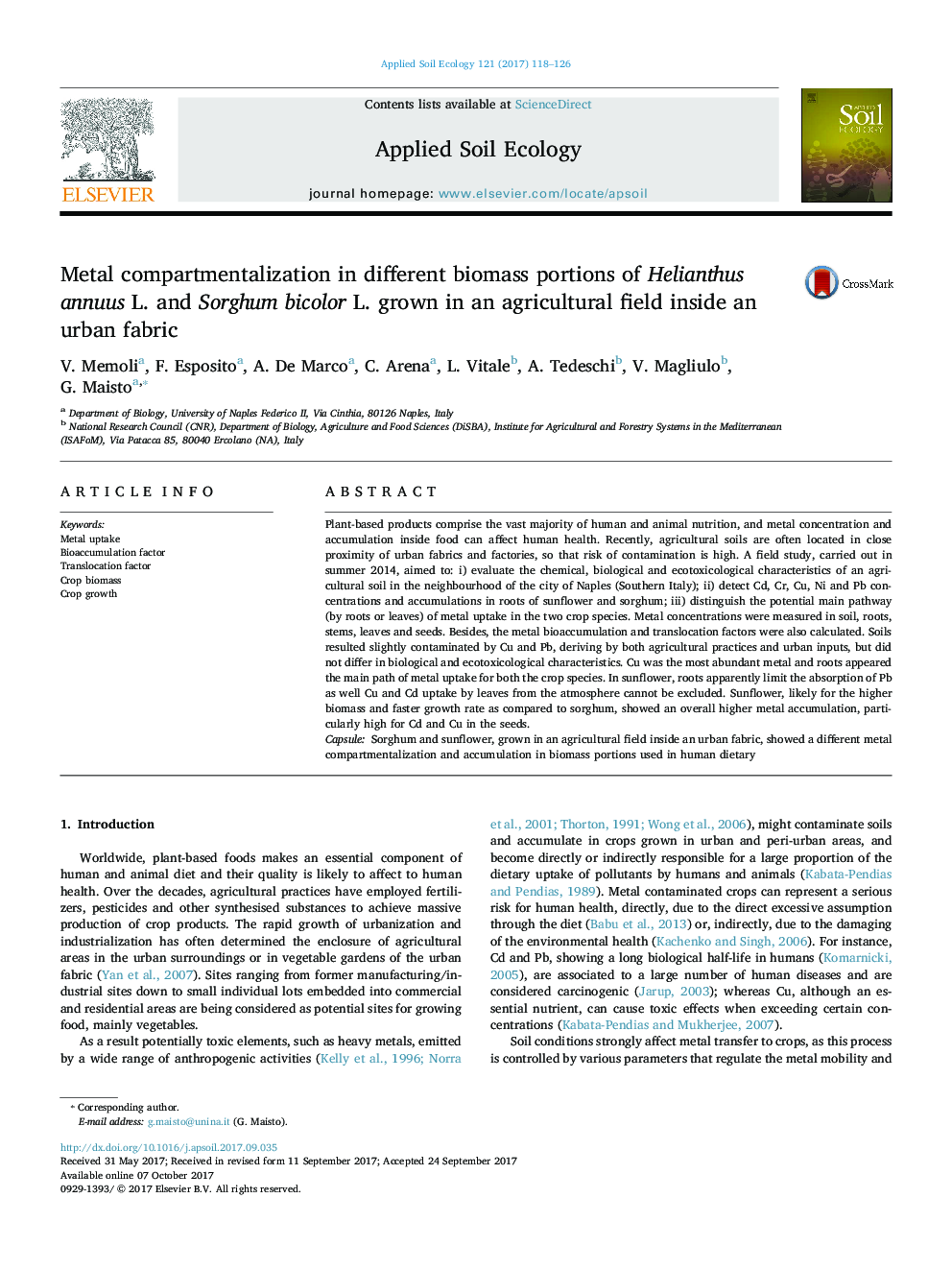| Article ID | Journal | Published Year | Pages | File Type |
|---|---|---|---|---|
| 5742550 | Applied Soil Ecology | 2017 | 9 Pages |
â¢Roots appeared the main path of Cu uptake in sorghum and sunflower.â¢Cd could be also uptaken by leaves of sunflower from the atmosphere.â¢Roots of sunflower apparently limited Pb absorption.â¢Sunflower showed an overall higher metal accumulation than sorghum.â¢Cd and Cu in the seeds of sunflower were particularly high.
Plant-based products comprise the vast majority of human and animal nutrition, and metal concentration and accumulation inside food can affect human health. Recently, agricultural soils are often located in close proximity of urban fabrics and factories, so that risk of contamination is high. A field study, carried out in summer 2014, aimed to: i) evaluate the chemical, biological and ecotoxicological characteristics of an agricultural soil in the neighbourhood of the city of Naples (Southern Italy); ii) detect Cd, Cr, Cu, Ni and Pb concentrations and accumulations in roots of sunflower and sorghum; iii) distinguish the potential main pathway (by roots or leaves) of metal uptake in the two crop species. Metal concentrations were measured in soil, roots, stems, leaves and seeds. Besides, the metal bioaccumulation and translocation factors were also calculated. Soils resulted slightly contaminated by Cu and Pb, deriving by both agricultural practices and urban inputs, but did not differ in biological and ecotoxicological characteristics. Cu was the most abundant metal and roots appeared the main path of metal uptake for both the crop species. In sunflower, roots apparently limit the absorption of Pb as well Cu and Cd uptake by leaves from the atmosphere cannot be excluded. Sunflower, likely for the higher biomass and faster growth rate as compared to sorghum, showed an overall higher metal accumulation, particularly high for Cd and Cu in the seeds.CapsuleSorghum and sunflower, grown in an agricultural field inside an urban fabric, showed a different metal compartmentalization and accumulation in biomass portions used in human dietary
